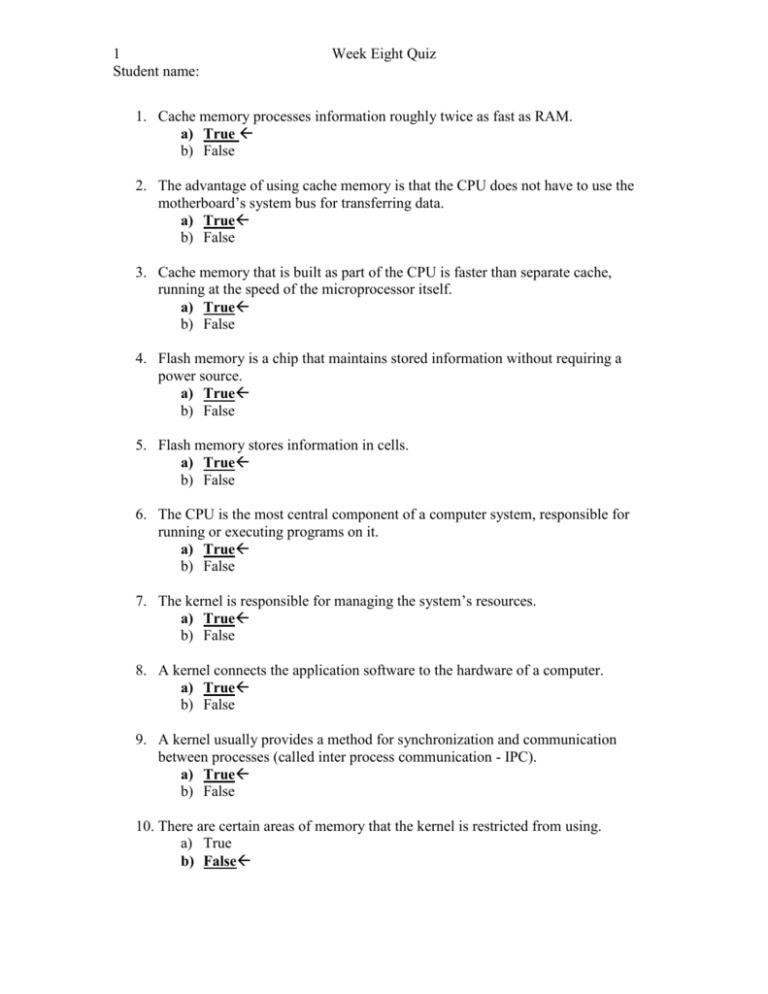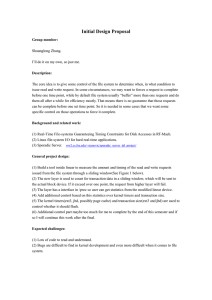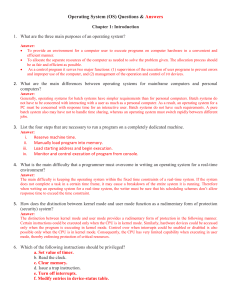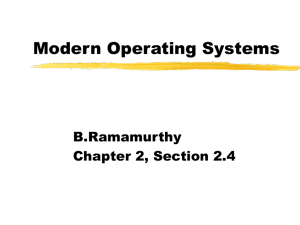Week Eight Quiz and Answers
advertisement

1 Student name: Week Eight Quiz 1. Cache memory processes information roughly twice as fast as RAM. a) True b) False 2. The advantage of using cache memory is that the CPU does not have to use the motherboard’s system bus for transferring data. a) True b) False 3. Cache memory that is built as part of the CPU is faster than separate cache, running at the speed of the microprocessor itself. a) True b) False 4. Flash memory is a chip that maintains stored information without requiring a power source. a) True b) False 5. Flash memory stores information in cells. a) True b) False 6. The CPU is the most central component of a computer system, responsible for running or executing programs on it. a) True b) False 7. The kernel is responsible for managing the system’s resources. a) True b) False 8. A kernel connects the application software to the hardware of a computer. a) True b) False 9. A kernel usually provides a method for synchronization and communication between processes (called inter process communication - IPC). a) True b) False 10. There are certain areas of memory that the kernel is restricted from using. a) True b) False 2 Student name: Week Eight Quiz 11. The kernel controls access to peripherals connected to the computer through device drivers. a) True b) False 12. In a monolithic kernel, all OS services run along with the main kernel thread, thus residing in the same memory area. a) True b) False 13. A microkernel is known for its high number of system calls and context switching. Could this type of overhead slow the system performance? a) True b) False 14. A tar file were originally designed for tape backups/archiving which could be created anywhere on the file system. a) True b) False 15. A semaphore is a mechanism that helps in synchronizing multi-threaded and multi-process based applications. a) True b) False











